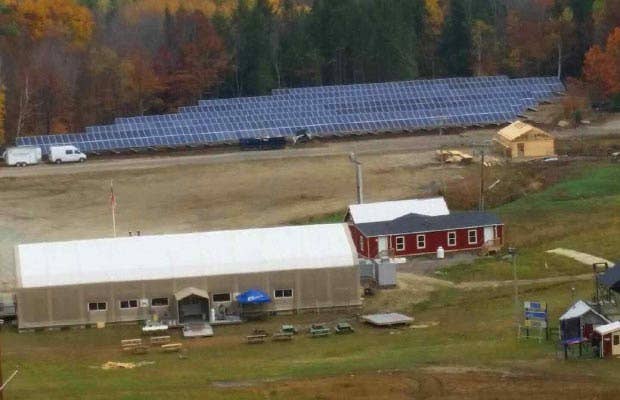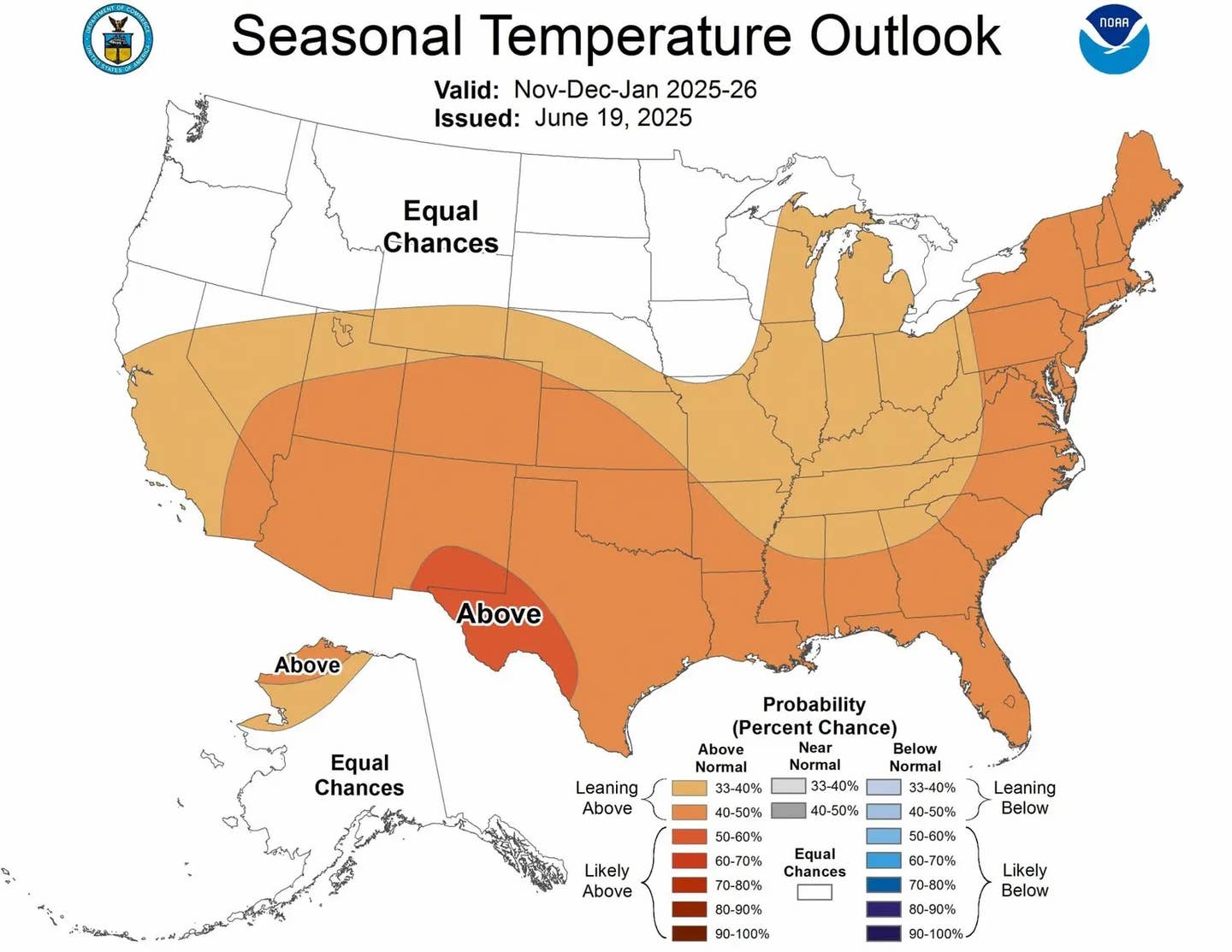Popular Stories
 The 803 solar panels at Mr. Abrams.
The 803 solar panels at Mr. Abrams.
Tiny
Mt. Abram, Maine–44 trails and a vertical drop of 1,150 feet–installed 803
solar panels next to their parking lot this past October. Taking the summit
double chair up this winter, you’ll be able to see four huge rows of solar
panels that will produce enough juice to power 46 homes, or in Mt Abrams’ case,
70% of their total electricity needs. Only Massachusetts’ Berkshire East gets
more of its power from on-site renewable energy.
Sounds
pretty good, right? Given the amount of energy required to get us all up and
down our favorite hill come wintertime–for the lifts, the grooming, the
snowmaking–we’d all certainly love to see less of that energy contributing to
the climate change that is slowly decimating snowpacks around the world. And it
is truly possible. While the process is complex and the review period is long,
if you want to see solar panels on your mountain, it can be done. Here’s how.
Funding
your project can be the most vexing part, however, photovoltaic solar projects
are currently eligible for government incentives and subsidies such as tax
credits, tax rebates, grants, accelerated depreciation (MACRS), and Solar
Renewable Energy Credits (SRECs). The combined savings can often offset 70% of
the cost of installation, and in the case of Mt. Abram, provide a payback for
the entire project in under five years.
Outlined
below are pieces to the puzzle that Mt Abrams’ owner, Matt Hancock, has
researched, invested in, and employed over the past few years, turning the
family mountain into a sustainable mountain playground.
Step #1: Hire a grant writer
 Matt Hancock the owner of Mr. Abrams inspects the solar panel. Portland Press Herald Photo
Matt Hancock the owner of Mr. Abrams inspects the solar panel. Portland Press Herald Photo
They will research, explore and apply for
opportunities to help fund your project, and their skills are absolutely needed
to navigate the technicalities of the grant world.
First
and foremost, grants are free, and there are piles of money waiting for someone
to come along and snatch them up. It might sound easy, but it is not something
most can do on their own succesfully, so hire a grant writer!
Whether
it is state, federal, or a local government grant, a grant writer is a
necessary tool that will end up paying for themselves many, many times over.
After signing up with a grant writer, Mt. Abrams was awarded $235,000 in
funding from the USDA Rural Energy for America Program (REAP). The grant was
put towards their 803 panel solar project, taking a 25 percent bite out of the
total cost of the project. High fives!
To
view available government grants, visit Grants.gov.
Step #2: Make the most of your Federal Investment Tax Credit (ITC)
This
provides cash now to fund your project, rather than tax savings down the road,
by trading the tax break to investors willing to cough up cash now.
Selling
the ITC, which can amount to 30% of the cost of construction of your renewable
energy project, will put cash on the table now to help pay for the construction
costs involved with your solar project.
 Dave Scanlan on at powder day at Mt. Abrams. Davin Currie Photo
Dave Scanlan on at powder day at Mt. Abrams. Davin Currie Photo
An
accountant and lawyer can structure an agreement to syndicate the sale of your
project’s tax credits to an investor, who will trade you cash to fund your
project in return for the tax benefit you qualify with your ITC. This can
save you from borrowing money at a higher rate to fund your construction
project. The ITC will exist through at least 2016.
More
information is available on the Solar Energy Industry Association website here.
Step #3: Stabilize your existing energy costs
Reduce the amount of
money you spend when energy costs are high and utilize net metering laws in
your state to offset energy costs through solar energy that you produce that
goes back into the larger grid. Lower your energy costs–particular when demand
across the grid drives prices up–by upgrading high energy consuming systems
like snowmaking.
During
a particularly cold spell, the demand for power goes up all across the
board–increasing the price. A ski area’s largest source of energy consumption
is traditionally their snowmaking operations, and when snowmaking is needed is
very unpredictable, and is often dependent entirely on temperature–meaning that
prime snowmaking times may also be the times when energy across the grid is the
most expensive.
 Snowmaking operations at Mt. Abrams.
Snowmaking operations at Mt. Abrams.
For
Mt Abrams, their snowmaking system accounts for close to three quarters of
their total energy load. Since it’s such a large demand, it also drives up the
cost of powering the lodge and ski lifts. But this past August, Mt. Abrams was
awarded an Efficiency Initiative Grant by the EPA. These funds were used to
upgrade their water pumping equipment–the biggest energy hog in their
snowmaking process. Variable speed motors on the pump will enable 4 times the
amount of snow to be produced at a fraction of the cost for diesel or
electricity–which will also reduce Mt. Abrams exposure when energy prices spike
during prime snowmaking periods.
Step #4: Use Net Metering to your advantage
Maine’s net metering
law has allowed Mt. Abrams to store up electrical credits during the summer,
when the solar panels are generating the most energy and the mountain’s energy
needs are the lowest, to offset the cost of the mountain’s electricity in the
winter. The resort offsets 70% of the energy that they need in the winter with
the solar energy credits they generate in the summer.
To
find out about your states Net Metering policies, visit the Database of State
Incentives For Renewables and Efficiency.
Join Our Newsletter
Step #5: Utilize the Accelerated Depreciation Allowance
In effect, the cost of the
solar equipment you purchase is reduced to zero over five years through yearly
income tax deductions you qualify for in the program. Businesses may recover
investments in certain property through depreciation deductions. This has
allowed the cost of qualifying solar energy equipment to be fully deducted over
a period of five years, and you can depreciate 50% of the value in the first
two years.
More
information is available at disreusa.org
Step #6: Invest in infrastructure, get a return on press and
customers
 Wood pellets heating replace fossil fuel-based systems.
Wood pellets heating replace fossil fuel-based systems.
Upgrades to snowmaking equipment and a commitment to renewable
energy are great ways to attract customers.
People
see the effort and commitment put forth by the resort and may decide to be a
part of it, and invest as a customer. The solar panels and energy-efficient
snowmaking upgrades have attracted great attention to Mt. Abrams, and Matt
believes this is a direct result of making a concerted commitment to a project
like this.
Mt
Abrams has also replaced their archaic fossil fuel-based heating system with a
high-efficiency boiler system that burns locally-produced wood pellets, cutting
out 13,000 gallons of heating oil that would otherwise be required to heat the
base lodge each winter.
Environmentally-conscious
upgrades not only fuel the renewal at Mt. Abrams, they also fuel enthusiasm for
the mountain.
“Positive
press and PR are getting the word out, but something that has a significantly
undervalued impact is enthusiasm–it sells more tickets, more beers and burgers,
and more condos,” Matt said.
Matt
believes that Mt. Abrams has the perfect customer and has made the effort to
embrace them. Generally, skiers and snowboarders are concerned with the
environment and make buying decisions based on their ethos. Patagonia, anyone?
As Matt said, “Skiers and snowboarders are stewards of the environment, and are
very nearly the perfect customer for this kind of mountain.”
More on Mt. Abram’s Environmental Initiatives
Demands
on snowmaking could intensify over time, as the warming climate is anticipated
to force the mountain to make snow more often and at higher temperatures. Ski
areas are seeking opportunities to save on their energy costs, and Mt. Abrams’
solar project, along with its other energy-saving measures, are part of a broad
plan to meet the challenge with local and renewable resources.
This
winter, Mt Abrams will be testing one of the newest snowmaking guns on the
market. The Nivis Ecostick can make snow without using any compressed air,
which is a huge energy-saving breakthrough. Generating compressed air
typically requires a high capacity electrical power supply, or in the case of
Mt Abrams, a diesel burning compressor. The Ecostick cost-effectively
produces snow and at the same time reduces massive amounts of carbon emissions.
 Solar panels in the fall.
Solar panels in the fall.
In
2012, a partnership formed with the Mountain Riders Alliance (MRA) brought Mt
Abrams to the table as the first resort to try out a new ownership and
management model aimed at boosting regional visitation, increasing awareness of
sustainability issues, and focusing on the core values of skiing. Matt Hancock
cannot speak more highly of the MRA and their efforts at Mt. Abram. Without the
assistance of Pete Blanchard, Dave Scanlan, Jamie Schectman and the entire MRA
team, Mt. Abrams would not be where they are today.
The mission of
Mountain Rider’s Alliance is to develop values-based, environmentally friendly,
rider-centric mountain playgrounds that encourage minimal carbon footprint
business practices, while making a positive impact in the local community.
To
find out more about the MRA and how you can get involved visit mountainridersalliance.com.





